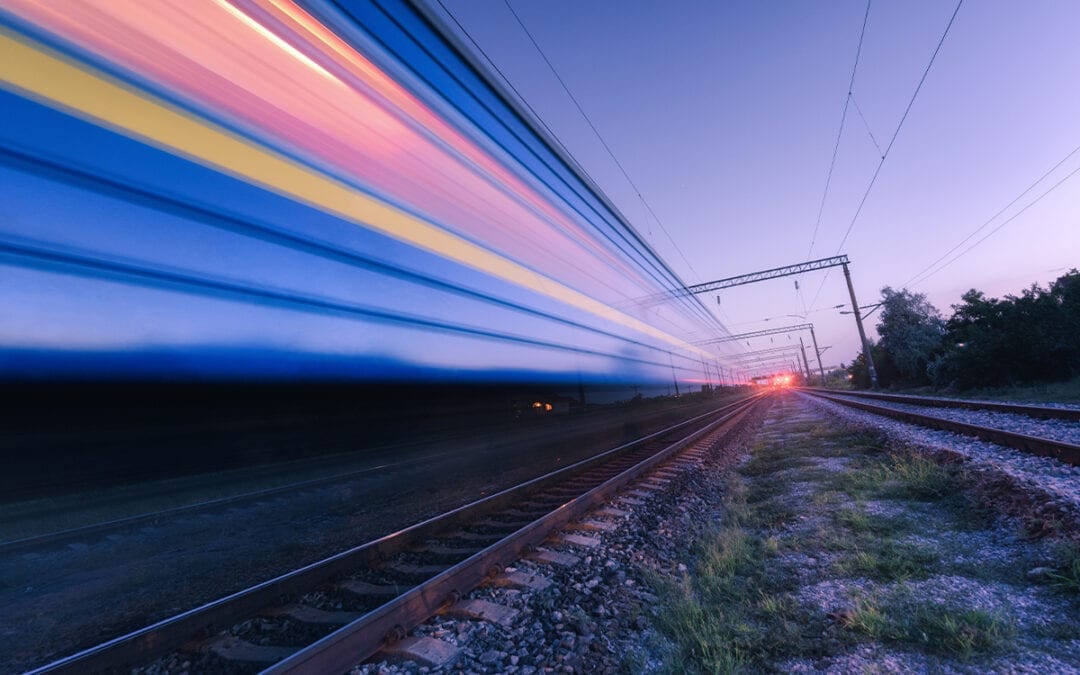Written by Rikko Kleijweg
SmartRail Solutions | 7 mins read
– Rikko’s Perspective on Rail
With over 20 years of experience, Rikko loves Rail. Because our Ab Ovo colleague Rikko is a well-respected ‘Rail Wiki’, we have asked him to write down compelling trends and developments in Rail. In this blog post he throws in seven trending topics that may be useful to have on your radar for 2021.
Rikko's Perspective on Rail
7 trending topics that may be useful to have on your radar for 2021.1. Noise reduction regulation for rail freight wagons
Switzerland forbids noisy wagons on her tracks and more countries are expected to follow. Apart from required technical changes on wagons (e.g. installing composite brakes), this affects planning and train checks. For example: Switzerland has this regulation operative, and DB Cargo Germany is refusing to take the non-compliant wagons through Germany (although in Germany these rules are not effective until 2022). When this happens, the transportation cost for returning the wagons will be charged to the sender. The wagon is just one part of the railway noise reduction.
2. The TAF TSI
The EU project for Technical Specification for Interoperability relating to Telematics Applications for Freight/Passenger Services, aim to define the data exchange between individual Infrastructure Managers (IMs) and also between IMs and Railway Undertakings (RUs). This project started in 2005, and now it is finally coming to implementation and deployment. Therefore it might be good to double check the actual status and requirements for the Infrastructure managers you are dealing with and see if they are working on the Train Composition Message (TCM), Wagon data, or Location coding.
TAF TSI
Double check the actual status and requirements for the Infrastructure managers you are dealing with and see if they are working.3. The Electronic Consignment Note (ECN)
Version 1.5 is used by some Railway Undertakings. Check it out as it might be interesting for you as well in the (near) future. Although there is still discussion on the actual business implementation, this makes it possible to support subcontractor involvement in a transparent way (e.g., by the new ‘role 3’ on the CIM).
4. The New Silk Route
Transport of cargo by rail from China to Europe, and vice versa, is still growing in volumes. More and more companies and countries are jumping on this train by developing new transport offerings and by developing new or upgrading existing infrastructure and terminals. This is now getting mainstream. For shippers, the silk route, is interesting due to the reduced transport time (50% reduction) compared to maritime transport, but off course this comes at a price.
Silk Route
For shippers, the silk route, is interesting due to the reduced transport time (50% reduction) compared to maritime transport.5. European Year of Rail 2021, the EC Green Deal and Modal shift
Rail is the future – the European Commission recognizes this and is paying special attention to it in 2021; this will make rail more ‘visible’. As part of the Green Deal, rail transport is given a special boost in the European Year of Rail as a sustainable, safe and innovative mode of transport. The “European Year of Rail” raises awareness about the modal shift from road to rail. EU Transport Commissioner Adina Valean: “There’s no doubt that railway transport means huge benefits in most areas: sustainability, safety, even speed. The European Year of Rail gives us the opportunity to re-discover this mode of transport. Through a variety of actions, we will use this occasion to help rail realize its full potential. I invite all of you to be part of the European Year of Rail.”
6. Brexit
A lot has changed over the past months and (potential) Brexit consequences on rail regulation, customs and good declarations and resulting congestion is still partly unclear. This is work in process by the EC and the UK for the regulators and good preparation and ‘learning by experience’. Question might become how rail can contribute and what ‘rail’ ways are possible around congestions.
European Year of Rail
EU Transport Commissioner Adina Valean: "The European Year of Rail gives us the opportunity to re-discover this mode of transport... We will use this occasion to help rail realize its full potential"7. Implementing the Purchase Sales model
As a commercial, operational and financial model in rail, the classical revenue distribution is abandoned more and more and replaced by the Purchase Sales model. The Purchase Sales model is the standard model used in business and logistics and used by the non-incumbent railway undertakings. For historical reasons the incumbent railway undertakings used the classical revenue distribution model. Nowadays, the classical revenue distribution model is regarded as unfair competition in the EU and has been banned.
For the railway undertakings adopting and implementing the purchase sales model in a strict and clear way, defining clear roles and responsibilities in all business aspects, is work in process. In this change process there is still a struggle between the past and the search for the ideal future setup. As the Purchase Sales model is used in other modalities / businesses, the rail sector might learn from them, adopt concepts and work on a future proof implementation and further digitization.
With over 20 years of experience, Rikko Kleijweg is a seasoned business consultant and product manager at Ab Ovo. As product manager he is responsible for the functional content and development of the Rail Cargo System (RCS) and 4RC SaaS, our ERP solutions for large and medium sized rail operators. During his career he worked as a consultant for many different rail companies in Europe.



